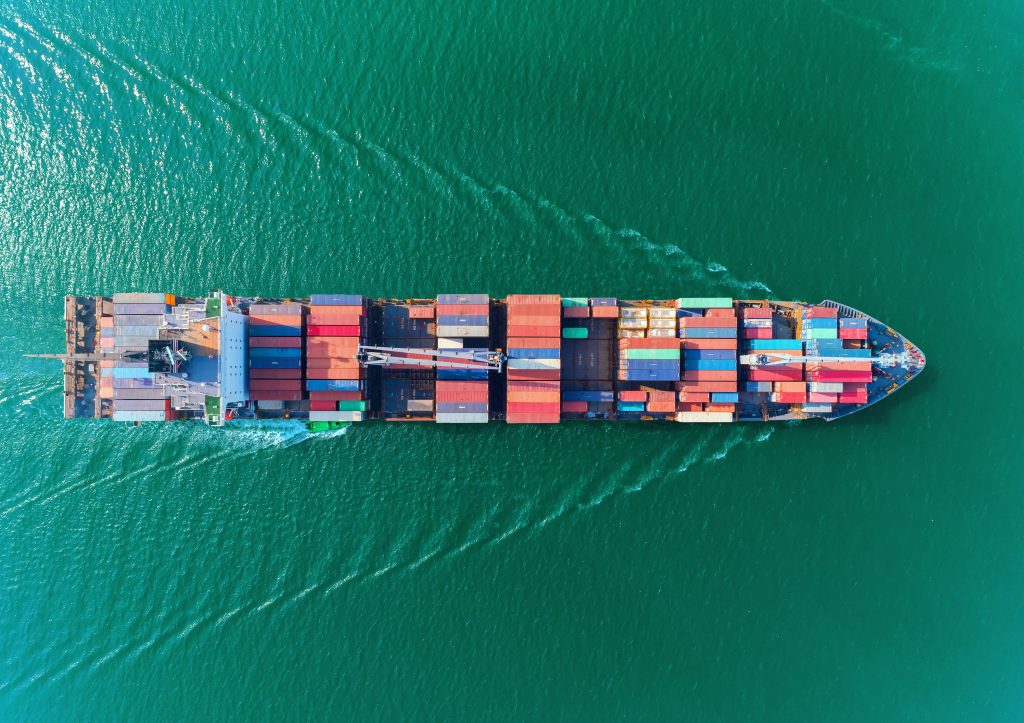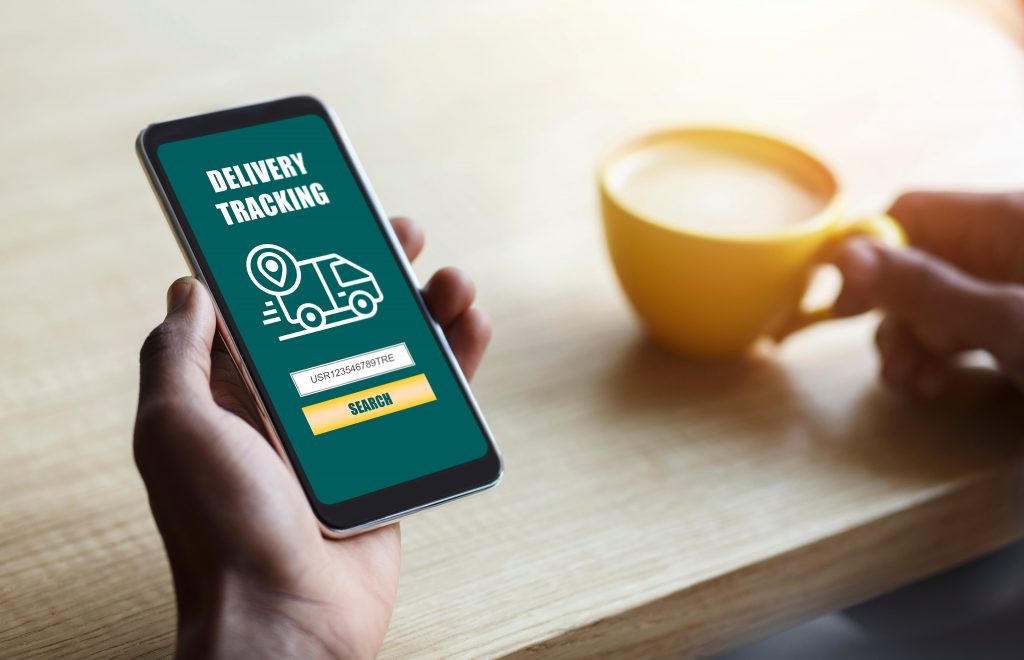
Why IoT Matters to the Transportation and Logistics Industry
IoT in logistics will improve supply chains and help shippers thrive. IoT devices help manage inventory, track parcels and optimize routes for operators.

IoT in logistics will improve supply chains and help shippers thrive. IoT devices help manage inventory, track parcels and optimize routes for operators.
Supply chains are complex beasts. Tracking goods from the manufacturer from a logistics center to your front door is a monumental feat — and a marvel of modern technology. Innovators continue to develop new solutions to improve operations and shore up profits. One area that’s just getting started is IoT in transportation and logistics.
Of course, internet of things devices and the APIs they feed data to are nothing new. The first IoT device emerged as a proof of concept in the 1980s. Consumer IoT, like smartwatches, was the new shiny thing about a decade ago. But what was always missing in early developments was a compelling business case, or a reliable wireless internet connection — or both.
However, current developments are laying the groundwork for current and future business models, especially in the logistics industry. Like the humble and now ubiquitous barcode, connected devices offer solutions to many logistics woes. Among them are problems in warehouse management, fleet management, and parcel tracking. Better analytics and monitoring may be just what logistics companies need to optimize their business models and remain profitable.
In this post, we’ll examine some of the current uses for IoT in logistics and look ahead at the future of the internet of things.
From wifi-connected kitchen appliances to smart watches to RFID tags, what qualifies as an IoT device is extensive. For the logistics industry, these are usually small transmitters either attached to a parcel, a shipping container, or a vehicle. Since they’re connected to the internet, they transmit data in real-time — often location data. But increasingly other data points are becoming possible such as temperature or even employee vital signs for wearable IoT.
Carnegie Mellon computer science majors created the first use case in the early 1980s. A device connected to a vending machine on one end of campus monitored and reported its contents to the department building via a hardwired early version of the internet. Rudimentary by today’s standards, the device was a novelty at the time.
To be fully functional, however, IoT devices need a stable internet connection to function. That’s fine if everything is stationary, but shipping packages is anything but. A lack of a stable wireless connection has been a limiting factor for IoT until recently, as mobile networks, satellite communications, and long-range wireless networks have improved. All have brought down the cost of transmission considerably, making IoT use cases in logistics much more compelling.
For logistics, the internet of things mostly comes in the form of small transmitters that provide real-time analytics for:

IoT for warehouse management runs the gamut from tracking inventory to running security systems and even monitoring the health of your warehouse employees. Their use in the logistics industry is not only as high-tech barcodes but also as real-time sensors that give you unparalleled insight into your entire operations.
Knowing what you have in the warehouse and when is vital to any retail operation. Whether you’re a brick-and-mortar store or an e-commerce site, accurate data is vital for customer experience and profitability. IoT devices transmit real-time data to connected apps and APIs so that you’ll know what inventory is in the warehouse and what needs to be replenished.
As IoT devices advance, there are opportunities for automation. You could, for example, use an app that integrates with IoT devices to show exactly what’s in stock, when items sell, and even anticipate when it’s time to order new inventory, streamlining manual labor and improving tracking notifications for you and your consumers.
IoT-powered security applications offer a number of benefits for businesses, including better access controls for people entering the facility, item tracking, and loss prevention. Connected surveillance cameras, connected locking systems, and tracking apps are all many of the uses for IoT in logistics.
Wearable IoT can improve occupational safety for warehouse employees as well. Smart devices can flag health hazards, notify managers of a worker’s physical condition and identify other risks, especially if they’re handling hazardous materials. Integrated devices can monitor temperature or concentrations of hazardous gasses or even alert logistics companies when workers are exhausted.
Some opportunities for this type of IoT device could be apps that track and predict employee efficiency and reduce the number of steps, or redundant trips employees make in the warehouse. Improving route planning leads to much greater efficiency and can help you allocate resources better and cut costs where necessary.

Another benefit to logistics companies is in fleet management. IoT devices can monitor delivery vehicles, whether they’re trucks, rail cars, ships, or airplanes. Tracking fleets of any vehicle is a challenge, especially when consumers demand they know where their items are and when they will arrive.
It’s also important for logistics companies to be able to track their vehicles and optimize routes or re-route if there are delays at ports or logistics centers. Pandemic disruptions made that painfully clear.
Since IoT devices also constantly transmit data, logistics companies can reliably track route data. Greater insight into how goods are moving through the supply chain can give you a greater ability to respond to delays or consolidate shipments. This can bring both fuel savings through more efficient routes and also reduce personnel and other administrative costs in the longer term.
Better tracking means more precise and trustworthy service for consumers who want to be sure their shipments will arrive promptly. That, in turn, is an opportunity for logistics companies to improve their customer service.
One area for future growth in the IoT industry is better freight management. Sending full shipments means more efficient operations. Since IoT devices supply much more precise data, it’s much easier to automate many of the issues with shipping and unloading at ports and other logistics terminals. Faster forwarding means happier customers and lower costs. You can imagine a full ecosystem of connected devices that communicate with each other and with logistics firms as a parcel travels through the supply chain.
Long-distance shipping, such as ocean freight, is a great example of when this would make sense. Organizing items that need to be offloaded first at every port of call along the way is only possible if you know where those items are. The future of IoT means fewer bottlenecks in shipping.
Some services like Spot Ship are already developing solutions in this field. It’s currently a SQL database that helps ship brokers run full shipments. But the app could integrate with IoT to keep an up-to-date log of shipments and automate more of its operations. Better analytics about what’s in a shipping container and where it’s headed means less waste, more sustainable shipping and more profits for logistics firms.

Just as you can track vehicles, you can also track individual parcels with IoT devices that feed into an app. Better clarity about where an item is in the supply chain and better predictions about when it will arrive can help improve customer satisfaction and deliver value to end users.
Increasing complexity in the supply chain means pinpointing where a parcel is can be challenging, especially if it’s between points along its journey. At the same time, customers have come to expect to know where their items are and when they’re expected to arrive.

Missed deliveries cost companies over $250,000 a year on average, according to a report from Loqate, a logistics solutions company. Most of this loss happens in last-mile delivery, where parcels go from a warehouse to their final destination.
Better reporting can mean better predictions for when a parcel will actually arrive. Rather than giving buyers an 8-hour window for when to be home, shipping companies could give one or two-hour notices for when to be home to collect an item.
IoT devices that transmit in real-time could help companies do that better. Better customer satisfaction and fewer missed deliveries could mean considerable savings and better operational efficiency.
Advances in IoT solutions can have a substantial impact on the logistics industry. Better reporting and data collection can help identify areas to improve efficiency. Knowing what’s in the warehouse, better predictive analytics, optimized routes, and less waste in delivery will all help bolster logistics companies as the industry transitions to serve growing e-commerce demand.
As IoT devices, as well as the apps and networks that support them advance, the logistics industry will continue to improve operations and find ways to innovate. Opportunities to automate systems and to roll out driverless fleets guided by internet-connected devices are some of the more exciting developments in the field. This is still quite a ways off, but it offers some glimpses into the future of logistics.
Companies that embrace technological advances and develop solutions to get ahead of the trends will reap the benefits of smart investments. IoT devices and the apps that handle that data will continue to emerge and provide better data for logistics providers, retailers, and consumers alike.
 Hi, I’m Marcin, COO of Applandeo
Hi, I’m Marcin, COO of Applandeo
Are you looking for a tech partner? Searching for a new job? Or do you simply have any feedback that you'd like to share with our team? Whatever brings you to us, we'll do our best to help you. Don't hesitate and drop us a message!
Drop a message